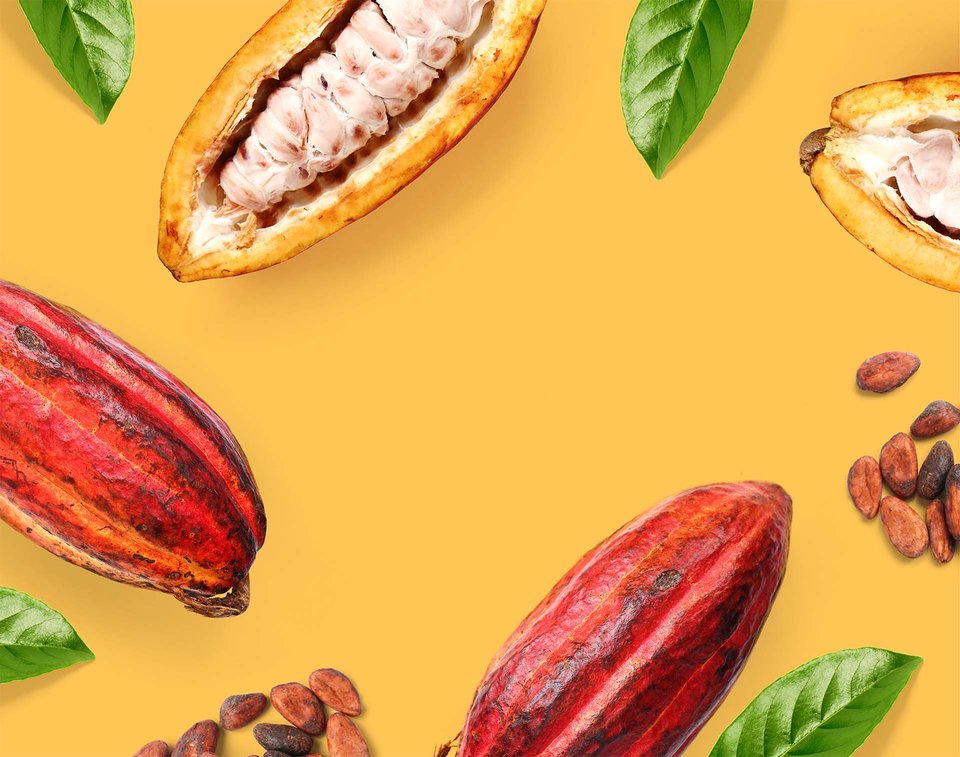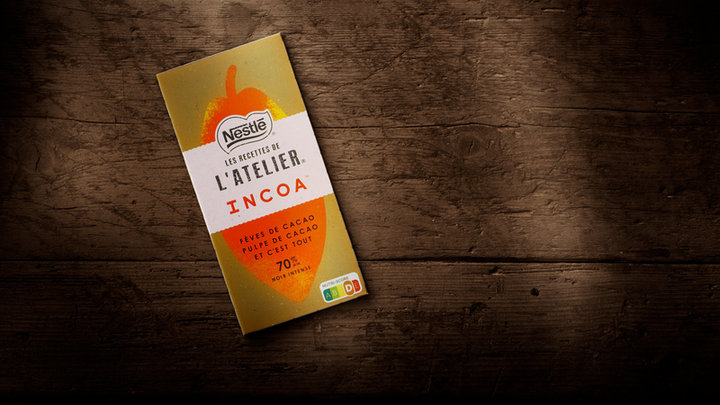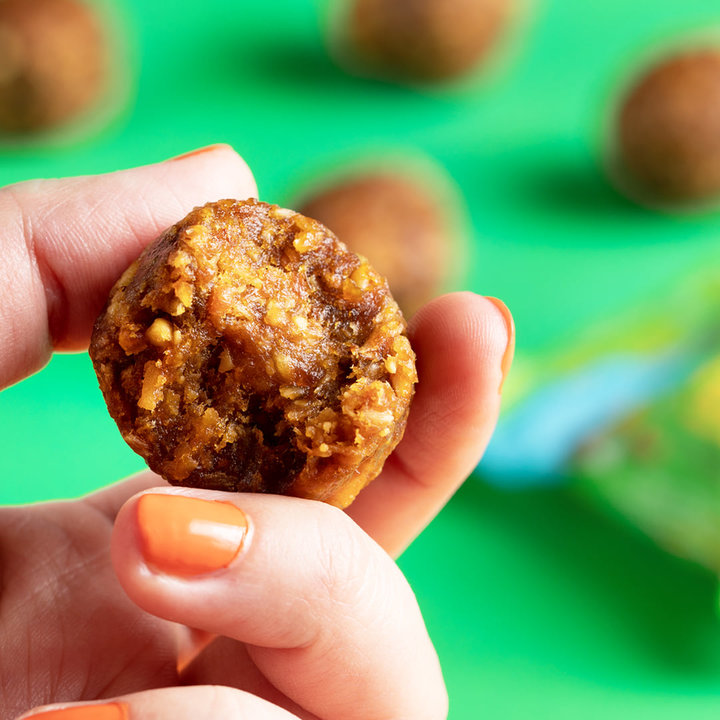
Cacao fruit
Sweet dreams – snack firms’ hopes for cacao fruit
Used to make chocolate, most of the cacao fruit is thrown away – but products that use more of the ingredient are hitting the market. Simon Harvey weighs up their potential.
C
acao fruit is emerging as a new kid on the block, with some major players in the confectionery industry believing in its potential as an ingredient beyond being the world’s source of cocoa. Products are slowly appearing on the market and research suggests there’s more to come.
The cacao fruit has been used to produce cocoa from its beans for applications in chocolate and bakery. But its other potential attributes have long been ignored in the western world until very recently.
The hard-cased fruit comes from the Theobroma cacao tree said to have its origins in Brazil, Colombia and Peru but is now widely grown in other South American countries, as well as in Africa and Asia, where it’s also known for its sweet and zesty juice.
Its beans or seeds have traditionally been extracted, fermented and ground into cocoa, while the outer husk, or peel, and the white, pithy nutritional pulp surrounding the beans, have been discarded. However, over the past couple of years, product developers have discovered that these other components of the cacao fruit, including the juice, can be deployed in confectionery and snacks. And with potential applications in ice cream, beverages and dairy, too.
Early products to hit the market
Proponents say the juice and pulp can replace sugar in food and drinks, while the cacao fruit also contains antioxidants, thiamine, vitamin B6 and magnesium. It is a source of theobromine, an alkaloid said to lower blood pressure, and reduce inflammation and bad cholesterol. And the husk can be ground into flour as an alternative ingredient to other fillers.
The fruit could appeal to the increased interest in upcycling and reducing food waste, while cacao fruit farmers could reap a better living wage by earning more from the crop they produce.
Nestlé, Mondelez International and Barry Callebaut, alongside its subsidiary Cabosse Naturals, have worked on products in the past two years – predominately chocolate – employing various parts of the fruit, either for a uniquely fruity, citrusy flavour or for natural sweetness.

Nestlé first tried it out with a KitKat in Japan in 2019 – KitKat Cacao Fruit Chocolate, a 70% dark chocolate produced from the beans and sweetened with the pulp. The world’s largest food company then followed it up this year with Incoa, a 70% dark chocolate bar under the Les Recettes de L’Atelier brand. The product was initially launched in the Netherlands and France, and again employed the pulp with no added refined sugar.
It’s gaining momentum because it’s a great product in its own right
Louise Barrett, the head of Nestlé’s technology centre in the UK city of York who looks after confectionery R&D globally, says the thought process started two years before the KitKat launch as Nestlé explored whether the other parts of the cacao fruit could be used in chocolate. “Now it’s gaining momentum because it’s a great product in its own right,” she says.
“Equally, I think it’s got great sustainability elements to it if you think about how today what’s wasted as a material. I think that’s where it’s also gained interest and traction but, first and foremost, it’s a really interesting, great-tasting ingredient.
“We’ve taken out all of the sucrose that we would typically use in a dark chocolate and replaced it with this cacao pulp to naturally sweeten it. We still want to explore how else we use it but we’ve been working on developing a commercialisation process. The supply chain for this type of ingredient didn’t exist at all two-and-a-half years ago, so it’s been quite a technical development to get us to this stage.”
Multiple factors at play
Mondelez, in partnership with Barry Callebaut, were also in on the act in 2019 with CaPao Cacaofruit Bites, snacks incorporating the beans, peel, pulp and juice, with the addition of nuts, seeds, spices and herbs.
Shannon Neumann, the director of innovation at SnackFutures, the Mondelez innovation and venture hub behind the CaPao brand, explains the company’s interest: “We know that 30% of all food globally goes to waste, and so the challenges with that are environmental, as well as societal.
“Our supply chain has this fantastic fruit that we’ve been using for centuries to make chocolate but that’s only 30% of the entire fruit; 70% of that fruit goes to waste. The idea becomes: how can we better utilise these resources both to help prevent food waste and to provide farmers with more income for their crops?”
Neumann says the pulp has a tangy, zesty flavour, rather like a combination between the exotic fruits lychee and mango, and honey. It has a “sweet tropical taste”, while the husk is “relatively neutral but with an earthy, nutty taste”, making it ideal when ground as a flour substitute.
Barry Callebaut, the world’s largest supplier of cocoa and chocolate products, went on its own in June this year with its WholeFruit Chocolate bar under the Cacao Barry brand. Launched in conjunction with Cabosse, WholeFruit is a 100%, “pure cacao”, dark chocolate serving chefs and artisans, initially in the UK, France, Italy, the US, Canada, Japan and Brazil.
Sylvie Woltering-Valat, the head of marketing at Cabosse, says: “Millennials and centennials have turned towards products that are not only tasty but also nutritious, and that leave a positive impact on the planet.
“It can be used as a replacement for refined sugars but – where we feel there is much more exciting news – we are bringing a real new flavour on the market. It lends itself very well to applications like ice cream, drinks and snacks.
We’re building a new category of chocolate.
“With WholeFruit, we’ve crafted a chocolate from 100% pure cacao fruit and sweetened the chocolate with the pulp. The approach has not been around a sugar replacement but really magnifying the taste of the fruit in the chocolate.”
Woltering-Valat explains the potential. “We’re building a new category of chocolate that addresses consumers’ needs for health and wellbeing because it is unique in taste, nutritious and good for the planet as we now upcycle the pulp and the outer layer of the fruit.
“As with every new breakthrough, it takes time to establish. Certainly, you need to build awareness, you need to get people familiar with it, experiment with it and then you convert it to the next level.”
Convincing consumers
Ultimately, however, it’s all about taste and embedded preferences. Creating awareness around a product like the cacao fruit, with its unique flavours and environmental credentials, is one thing but it’s a different ball game to convince consumers used to their favourite chocolate, for instance.
“The only challenge that we’re going to have in these products becoming commonplace, is what [the cacao fruit] is replacing. Sugar is super abundant and super cheap,” Steve Osborn, a director at Aurora Ceres Partnership, a UK-based food and drink consultancy, tells Just Food.
“We can sit here and idealistically say ‘this is great, we’re getting sweetness from the natural pulp of the cacao fruit, we are using all of the waste.’ That's all great and we should be pleased about that sort of philosophical shift. The other part of it, of course, is that we’re very particular about our taste profiles.”
Mondelez, Barry Callebaut and Cabosse acknowledge their new products are premium-priced.
Cabosse’s Woltering-Valat says: “Our ability to crack this fruit is really our ability to produce large quantities with very high-quality products that preserve the nutritiousness and the delicious flavours. This comes at a cost, obviously, and we are indeed looking for more premium types of pricing.”
Price is an issue to overcome if chocolate confectionery, snacks and other emerging products made from the cacao fruit are to appeal to the mass-market.
“You've got to penetrate into that main market,” Osborn says. “Otherwise, it just ends up being a premium niche. And whilst a premium niche has a place, there’s always a trickle-down effect [needed]; how you get consumers to change their taste profile.
“I am always fascinated to hear about these products. I think it’s the right direction and it’s the right philosophy but it’s about how we move against this massive commercial machine. And that’s not easy.”
The need for scale
Nestlé’s Barrett says greater scale is needed to drive out the costs, particularly when taking a fresh raw material that’s 80% water then drying it and converting it into various different products. “It's understanding how we can make that a more commercial supply chain and ingredient,” she says.

Mondelez’s CaPao Cacaofruit Bites.
Credit: CaPao / Facebook’
However, while Neumann admits Mondelez’s CaPao Cacaofruit Bites fall into the premium segment, she says “within the confectionery world it depends on how you’re optimising your formula; you may be adding this ingredient but perhaps there’s another area where you may be able to pull out some costs to keep it neutral to the consumer”.
Nevertheless, from the farmers’ perspective, the developments could make a difference. They could potentially earn more from the same number of trees, which previously only generated revenue from the beans used to produce cocoa, with, returning to Neumann’s point, 70% of the fruit going to waste.
Woltering-Valat expands on the theme. “We’re making better use of these resources, but also a better use of all the efforts that they’ve put into growing the fruits, in the energy, in the water, in the time that they’ve invested.”
Neumann says the potential of using the previously discarded parts of the fruit fits well with the increasing awareness around upcycling and food waste, from manufacturers and consumers alike.
In the US for example, the not-for-profit organisation Upcycled Food Association was founded in 2019, formed in its own words by “upcycled food companies themselves, who recognised the power of collaboration in growing a successful food category and environmental movement”.
Mondelez’s SnackFutures is part of that association, which, in April, launched a product seal said to be the world’s first certification mark for upcycled foods.
At Nestlé, Barrett says an 80% dark chocolate Incoa variety is on the way, declining to provide further details, while Neumann says the CaPao Cacaofruit Bites will be joined in October by a “new format that we’re just about ready to talk about but not quite yet”.